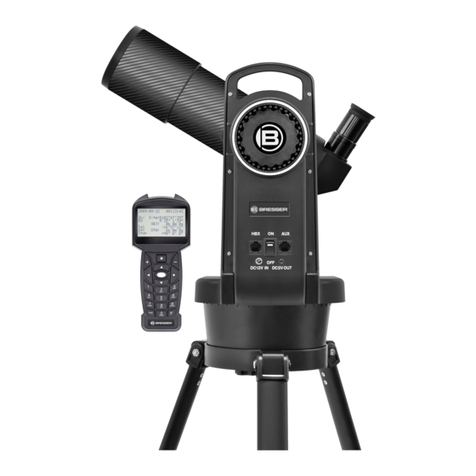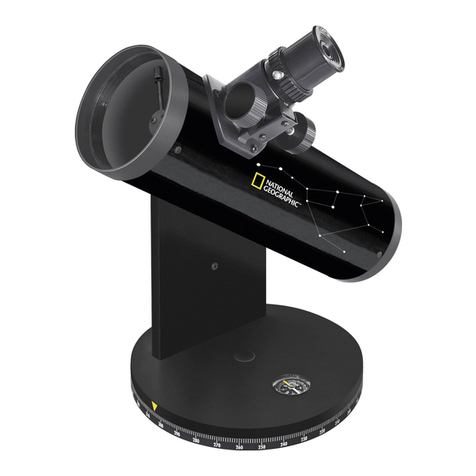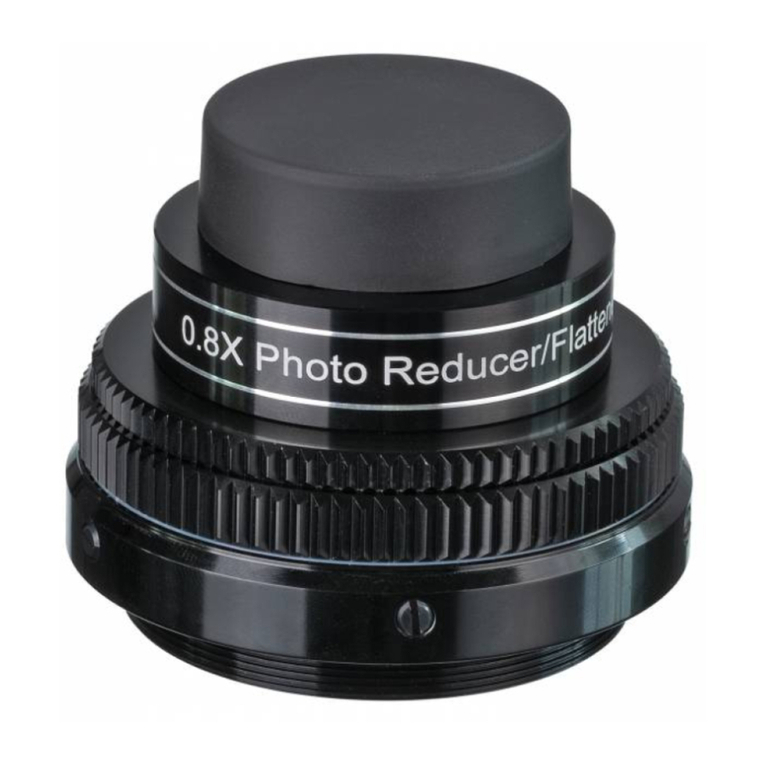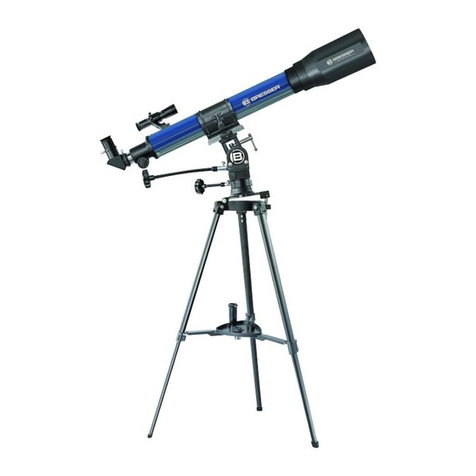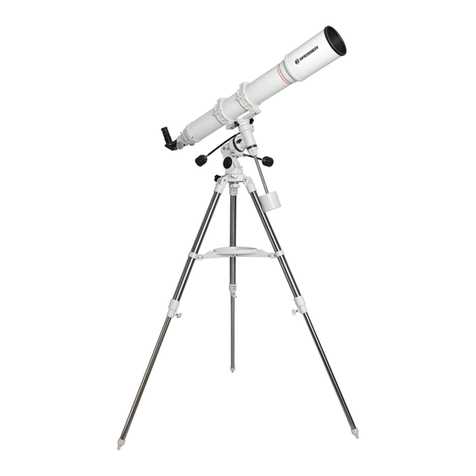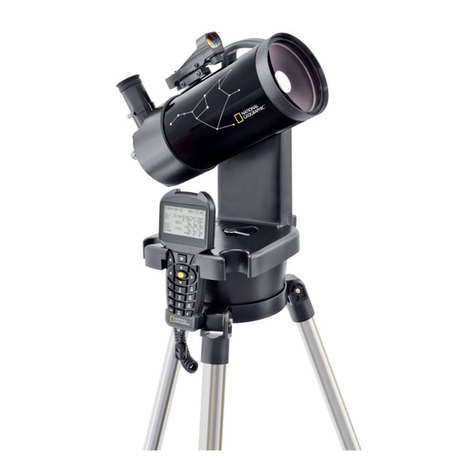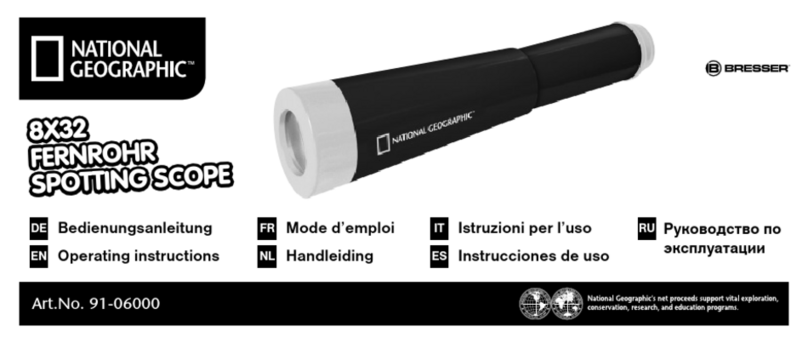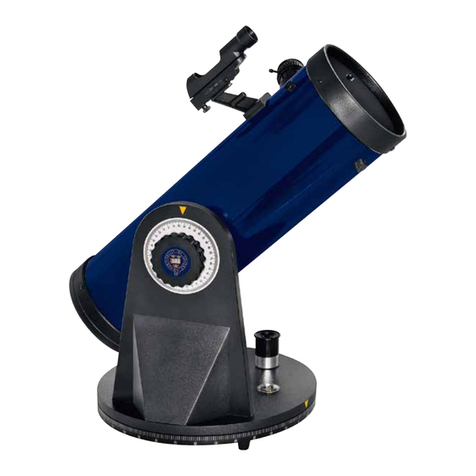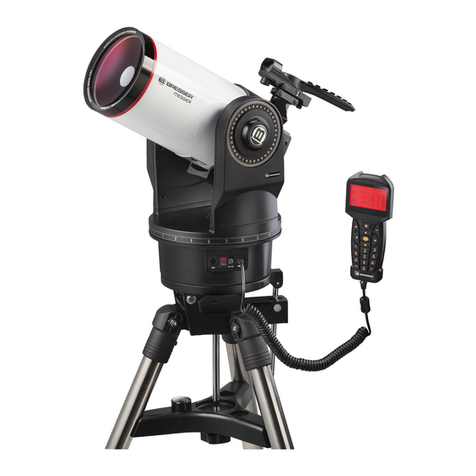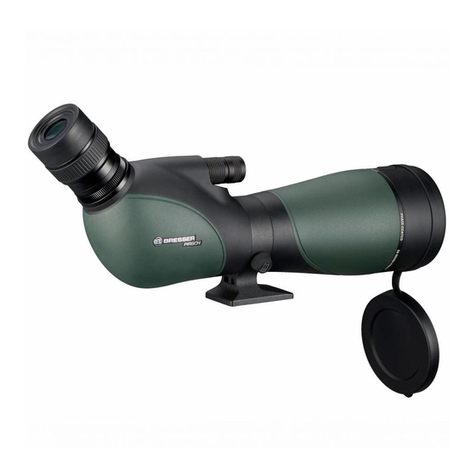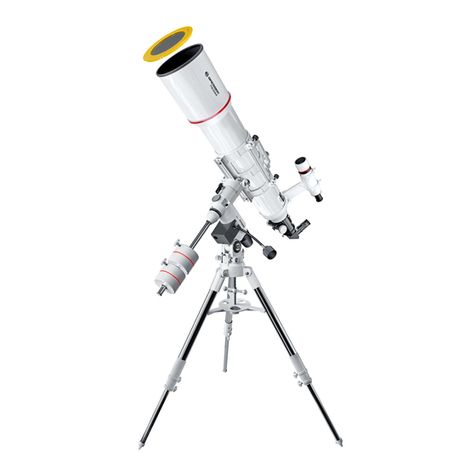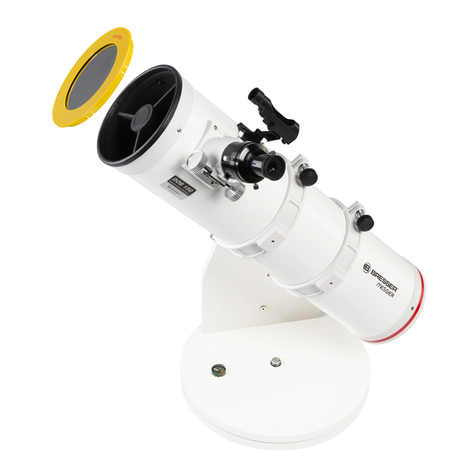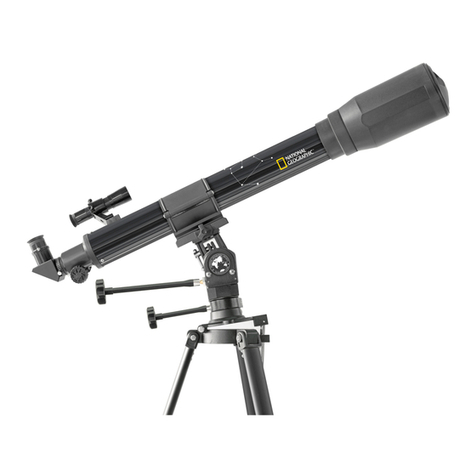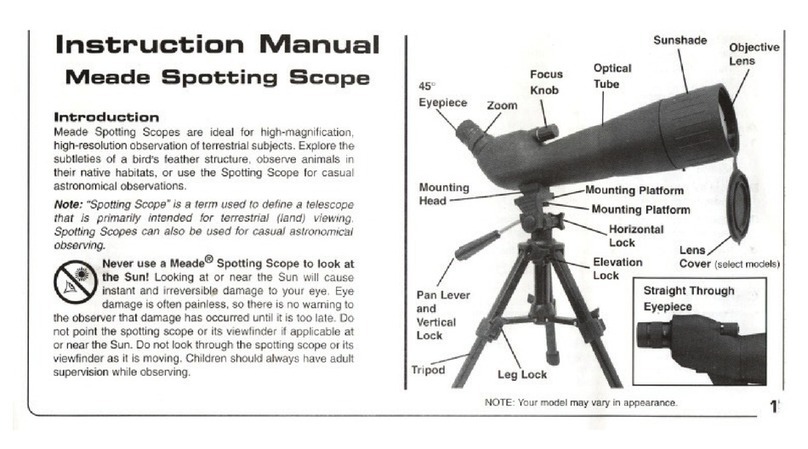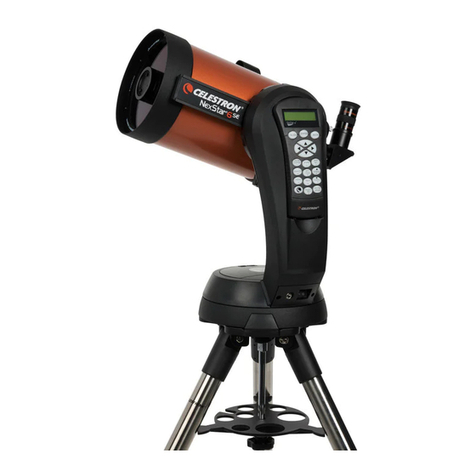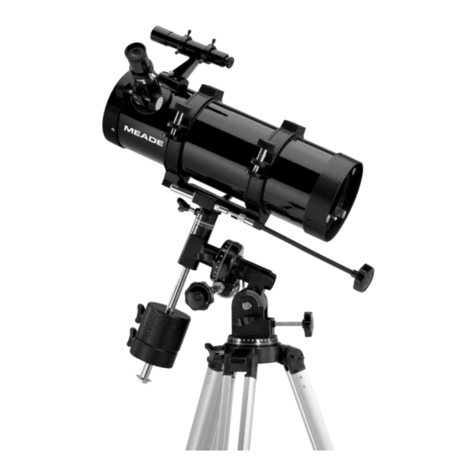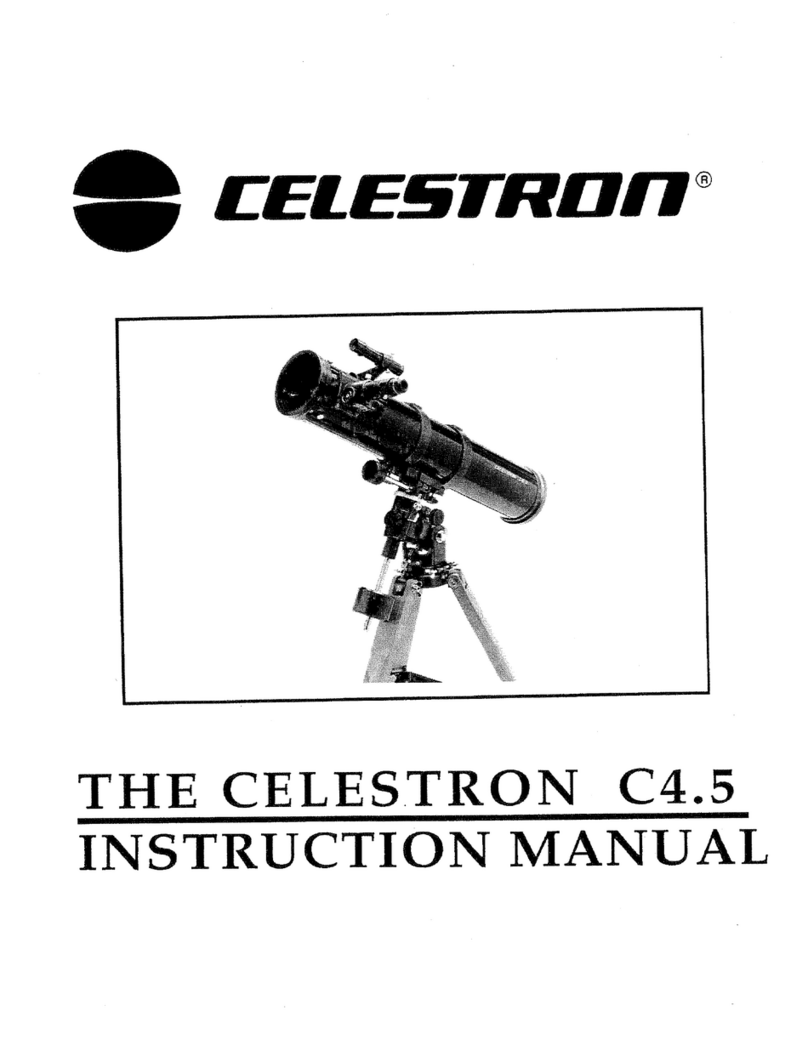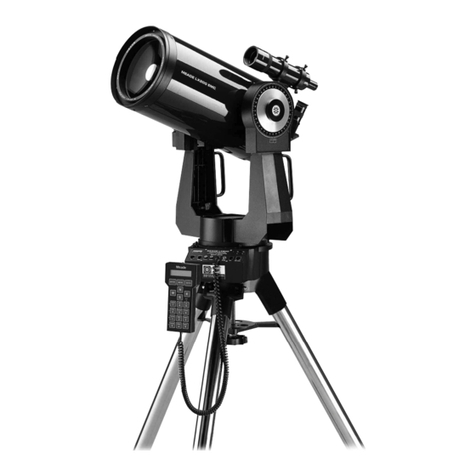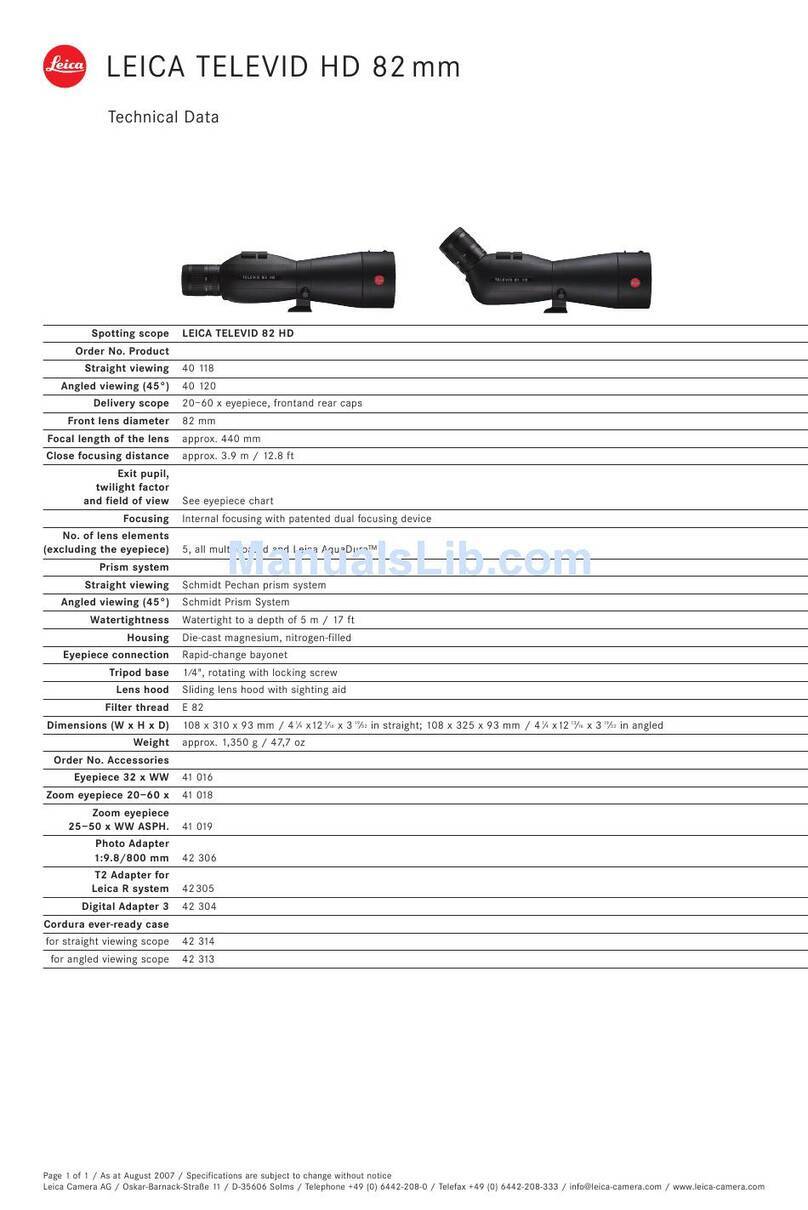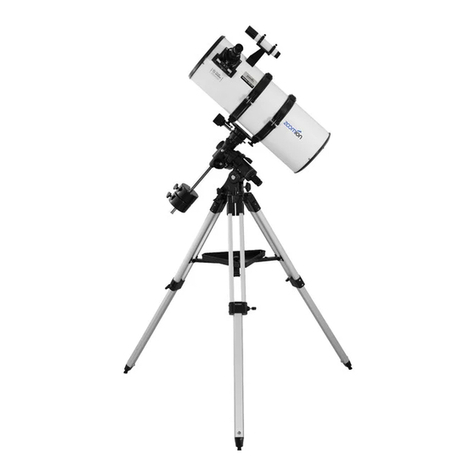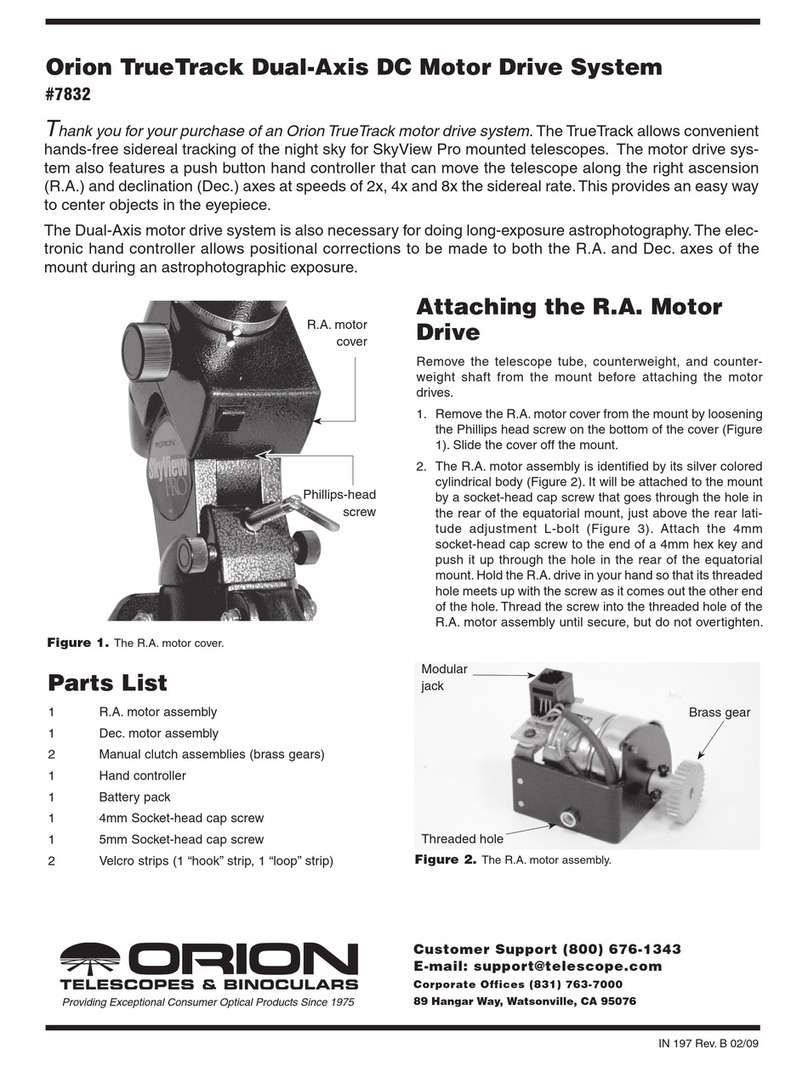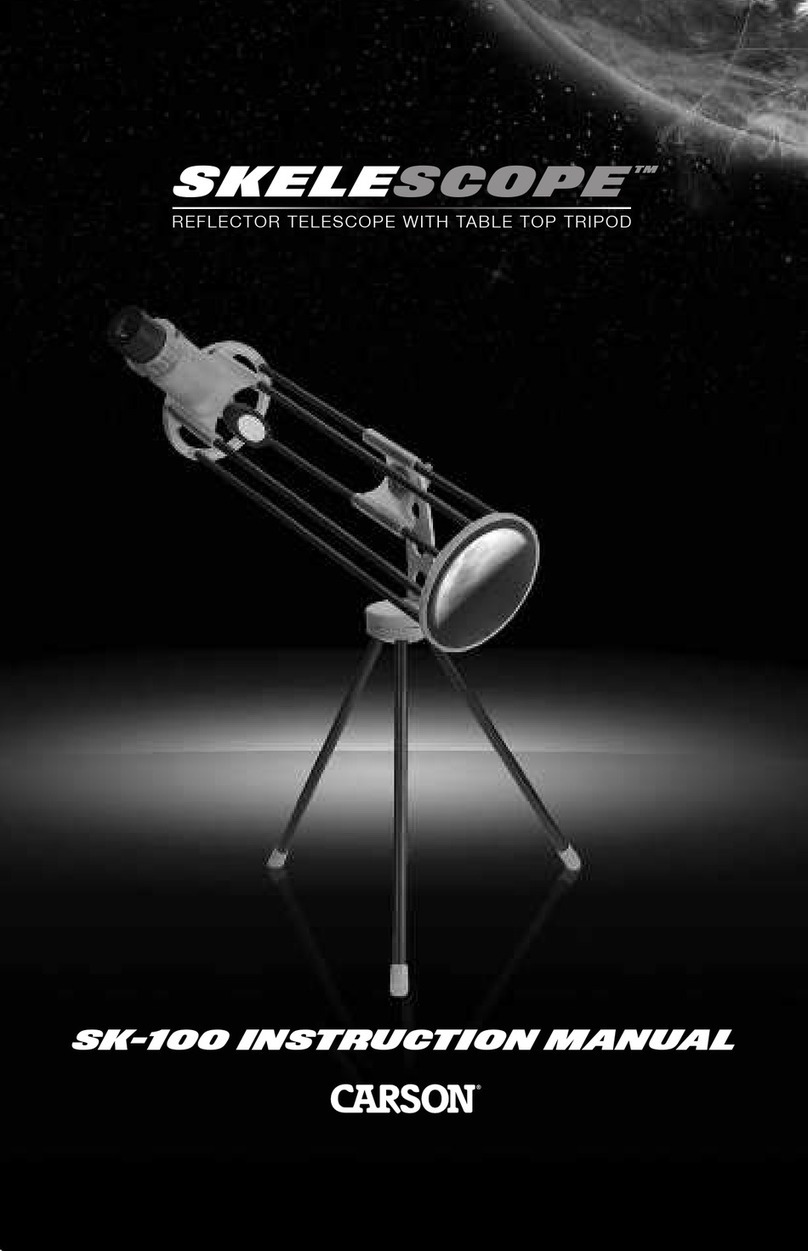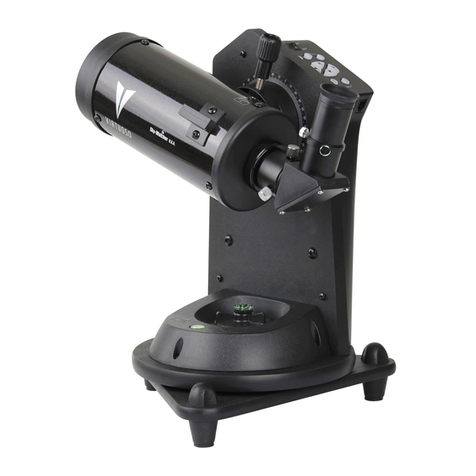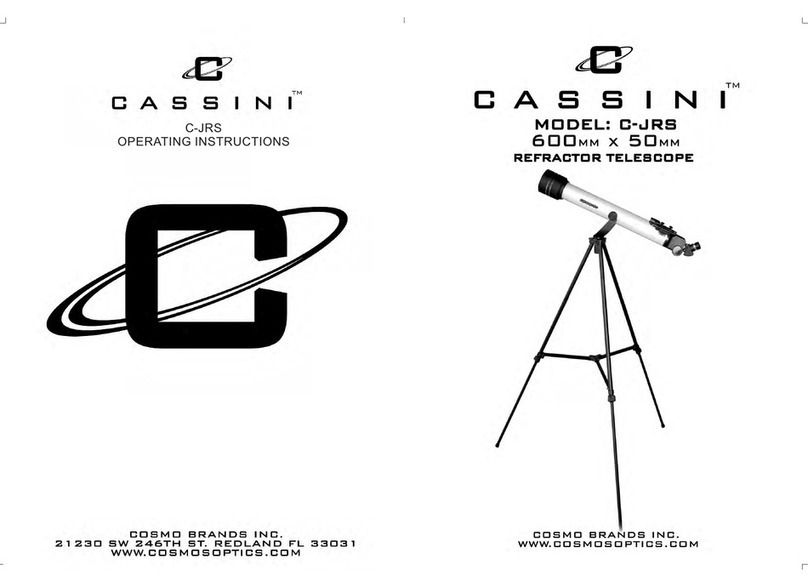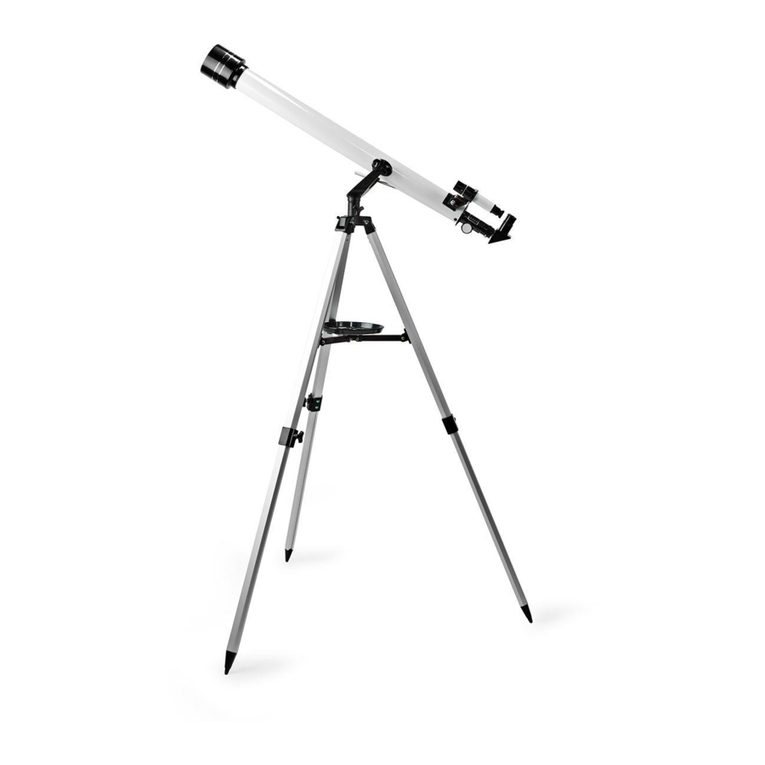
9
EN
Possible observation targets
The following section details several interesting and easy-to-find celestial objects you may want to observe through your telescope.
The Moon
The moon is Earth's only natural satellite.
Diameter: 3,476 km / Distance: 384,400 km from Earth (average)
The moon has been known to humans since prehistoric times. It is the second brightest object in the sky, after the sun. Because the moon
circles the Earth once per month, the angle between the Earth, the moon and the sun is constantly changing; one sees this change in the
phases of the moon. The time between two consecutive new moon phases is about 29.5 days (709 hours).
Constellation Orion: The Orion Nebula (M 42)
Distance: 1,344 light years from Earth
Though it is more than 1,344 light years from Earth, the Orion Nebula (M 42) is the brightest diffuse nebula in the sky. It is visible even with
the naked eye and a worthwhile object for telescopes of all types and sizes. The nebula consists of a gigantic cloud of hydrogen gas with
a diameter of hundreds of light years.
Constellation Lyra: The Ring Nebula (M 57)
Distance: 2,412 light years from Earth
The famous Ring Nebula (M57) in the Lyra constellation is often viewed as the prototype of a planetary nebula. It is one of the magnificent
features of the Northern Hemisphere's summer sky. Recent studies have shown that it is probably comprised of a ring (torus) of brightly
shining material that surrounds the central star (only visible with larger telescopes), and not a gas structure in the form of a sphere or an
ellipse. If you were to look at the Ring Nebula from the side, it would look like the Dumbbell Nebula (M 27). When viewed from Earth, we
are looking directly at the pole of the nebula.
Constellation Vulpecula (Little Fox):
The Dumbbell Nebula (M 27)
Distance: 1,360 light years from Earth
The Dumbbell Nebula (M 27) was the first planetary nebula ever discovered. On 12 July 1764, Charles Messier discovered this new and
fascinating class of objects. We see this object almost directly from its equatorial plane. If we could see the Dumbbell Nebula from one
of its poles, we would probably see the shape of a ring, something very similar to what we know as the Ring Nebula (M 57). In reasonably
good weather, we can see this object well, even with low magnification.
Telescope ABC’s
What do the following terms mean?
Eyepiece (3):
An eyepiece is a system made for your eye and comprised of one or more lenses. In an eyepiece, the clear image that is generated in the focal
point of a lens is captured and magnied still more.
There is a simple formula for calculating the magnication:
Focal length of the telescope tube / Focal length of the eyepiece = Magnication
In a telescope, the magnication depends on both the focal length of the telescope tube and the focal length of the eyepiece. From this formula,
we see that if you use an eyepiece with a focal length of 20 mm and a telescope tube with a focal length of 400 mm, you will get the following
magnication:
360 mm / 20 mm = 18 times magnication
Focal length:
Everything that magnies an object via an optic (lens) has a certain focal length. The focal length is the length of the path the light travels from
the surface of the lens to its focal point. The focal point is also referred to as the focus. In focus, the image is clear. In the case of a telescope,
the focal length of the telescope tube and the eyepieces are combined.
Lens:
The lens turns the light that falls on it around in such a way so that the light gives a clear image in the focal point after it has traveled a certain
distance (focal length).
Magnication:
The magnication corresponds to the difference between observation with the naked eye and observation through a magnifying device like a
telescope. If a telescope conguration has a magnication of 30x, then an object viewed through the telescope will appear 30 times larger than
it would with the naked eye. See also 'Eyepiece'.
Zenith mirror (diagonal) (2):
A mirror that deects the ray of light 90 degrees. With a horizontal telescope tube, this device deects the light upwards so that you can com-
fortably observe by looking downwards into the eyepiece. The image in a diagonal mirror appears upright, but rotated around its vertical axis
(mirror image).

